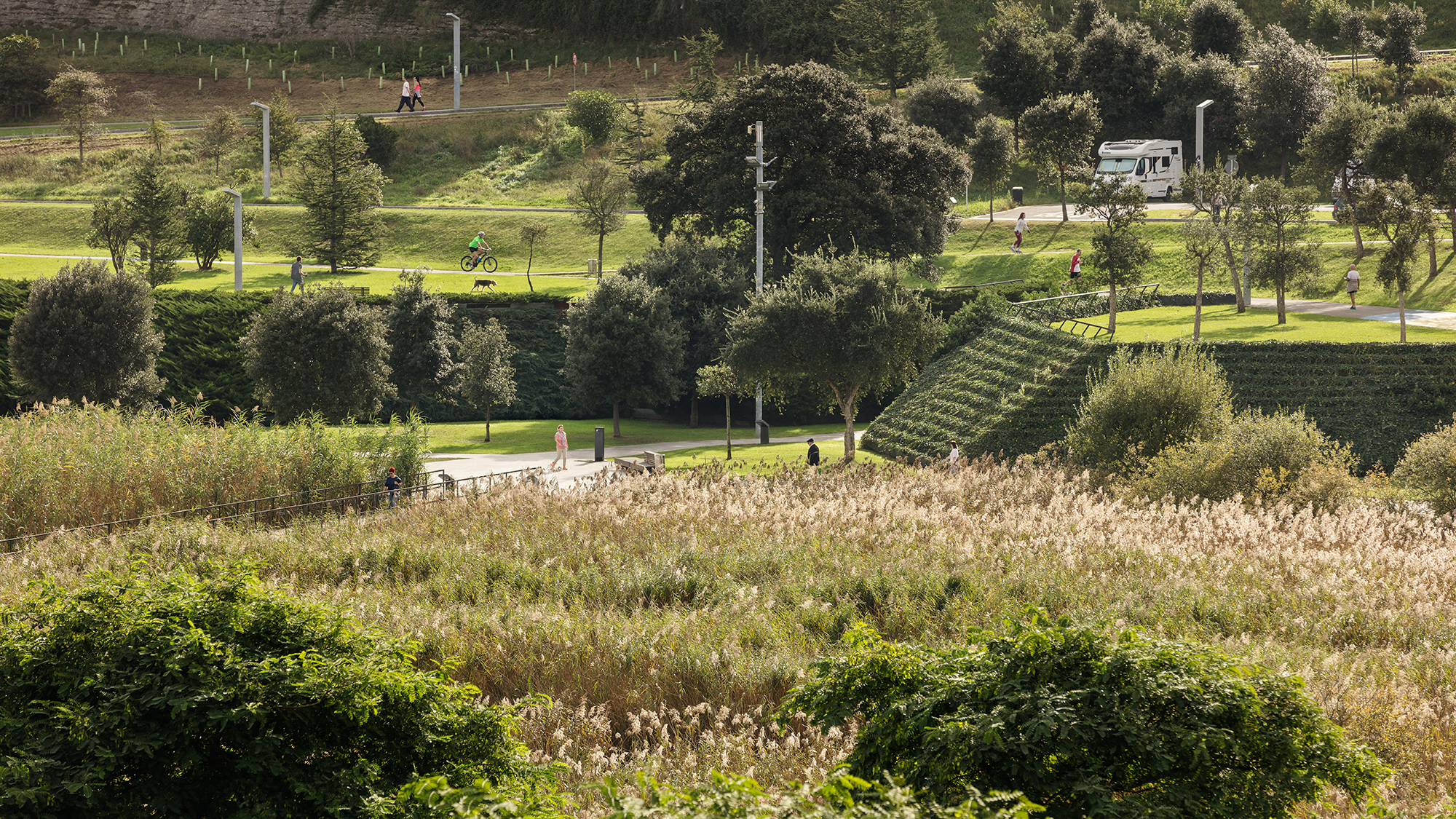
Linking Biodiversity Conservation and Sustainable Urban Water Management
May 22nd, recognised as the International Day of Biological Diversity, serves as a global reminder of the importance of safeguarding our planet’s rich array of species. The theme for this year, ‘From Agreement to Action: Build Back Biodiversity,’ emphasises the need for implementing initiatives outlined in the Kunming-Montreal Global Biodiversity Framework. The D4RUNOFF project seeks to implement, track and demonstrate how hybrid nature based solutions can utilise biodiversity and water-related ecosystems to play a vital role in our collective well-being. This article explores how one of the project’s case study sites, Parque de las Llamas in Santander, exemplifies the integration of ecological restoration, urban community parks, and sustainable water management.
Parque de las Llamas
Situated in the heart of Santander, Spain, Parque de las Llamas stands as a remarkable testament to ecological restoration and the coexistence of urban communities and nature. Initially a degraded marshy riverbed, the park has undergone an impressive transformation, reclaiming an area once polluted and neglected. Today, it encompasses a 45,000 sqm lagoon, wetland plants, over 2,500 trees, and a diverse range of botanical species endemic to the Cantabric Region.
Freshwater ecosystems cover a minuscule portion of the Earth’s surface, yet they harbor over 10% of all species (1). Parque de las Llamas’s design incorporates a series of wetland habitats, including an artificial lake acting as a reservoir for runoff, expanding the marshy habitat. These interconnected water systems provide vital breeding grounds, nesting sites, and stopover points for numerous bird species, such as Common Pochard, Little Grebe, Sedge Warbler, and Water Rail. Also situated underneath the park is an integrated water management system and waste water pumping station run by Aqualia.



Conservation Amid Urban Sprawl
Parque de las Llamas demonstrates how the preservation of small fragments of nature within urban areas, coupled with effective management strategies, can combat biodiversity loss associated with urban sprawl. Over the past 15 years, the scientific monitoring conducted by SEO/BirdLife has documented the presence of approximately 150 bird species within this urban park, representing nearly a quarter of all bird species reported in Spain (2). This remarkable figure attests to the success of conservation measures, including the installation of nest boxes, differential harvesting, planting native flora, diversifying vegetal strata, and managing water resources, in collaboration with University of Cantabria, Santander City Council and Aqualia.
The D4RUNOFF Project’s Significance
Within the broader context of the D4RUNOFF project, Parque de las Llamas serves as a significant case study site. The project aims to address the challenges posed by urbanisation and climate change on water management, in particular, assessing the impacts of urban runoff. By highlighting the symbiotic relationship between water cycles, biodiversity, and human well-being, D4RUNOFF underscores the importance of adopting integrated water storage solutions. The recent World Bank report, “What the Future Has in Store: A New Paradigm for Water Storage,” emphasises the urgent need for collaborative efforts across sectors to champion natural, built, and hybrid water storage and processing systems (3). Parque de las Llamas represents a living example of how sustainable water management can be achieved in an urban setting while concurrently protecting and promoting biodiversity.

Through the life of the project we will be highlighting examples of these sites that exemplify the successful integration of ecological restoration, urban community parks, and sustainable water management. The park’s transformation from a polluted and neglected site into a thriving ecosystem underscores the potential for harmonious coexistence between human communities and nature.


